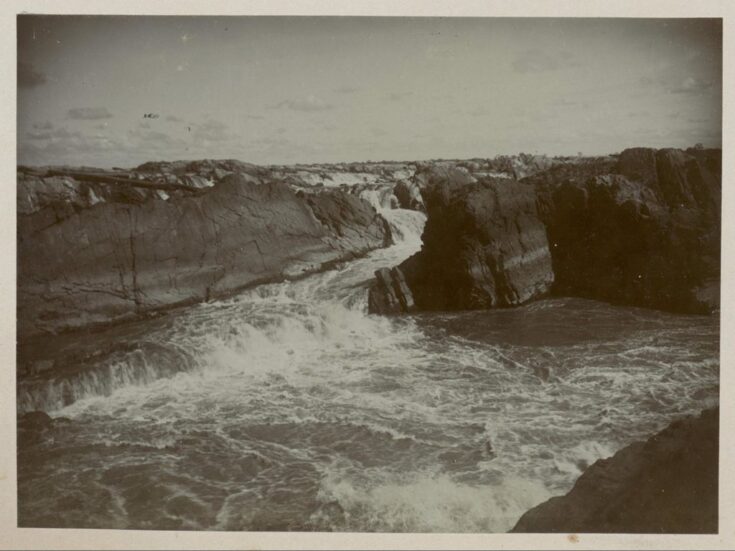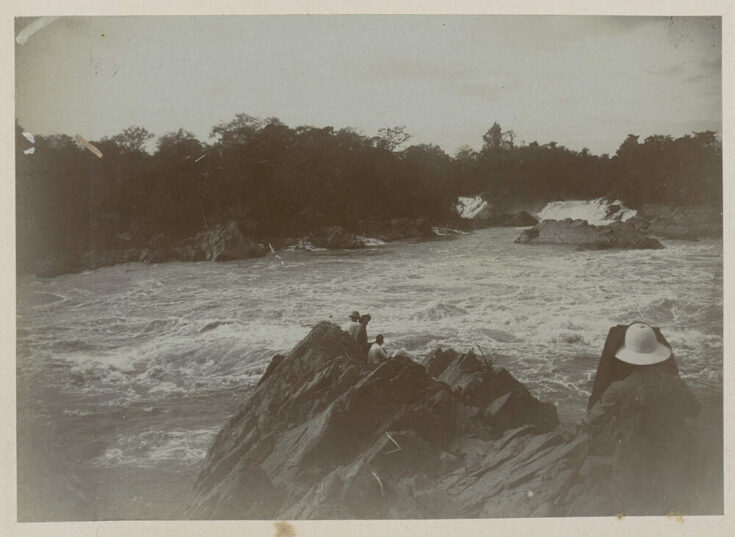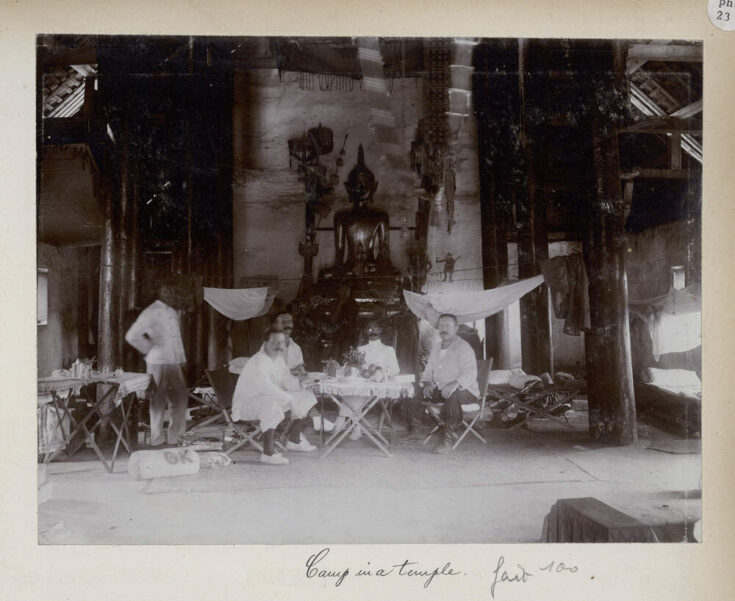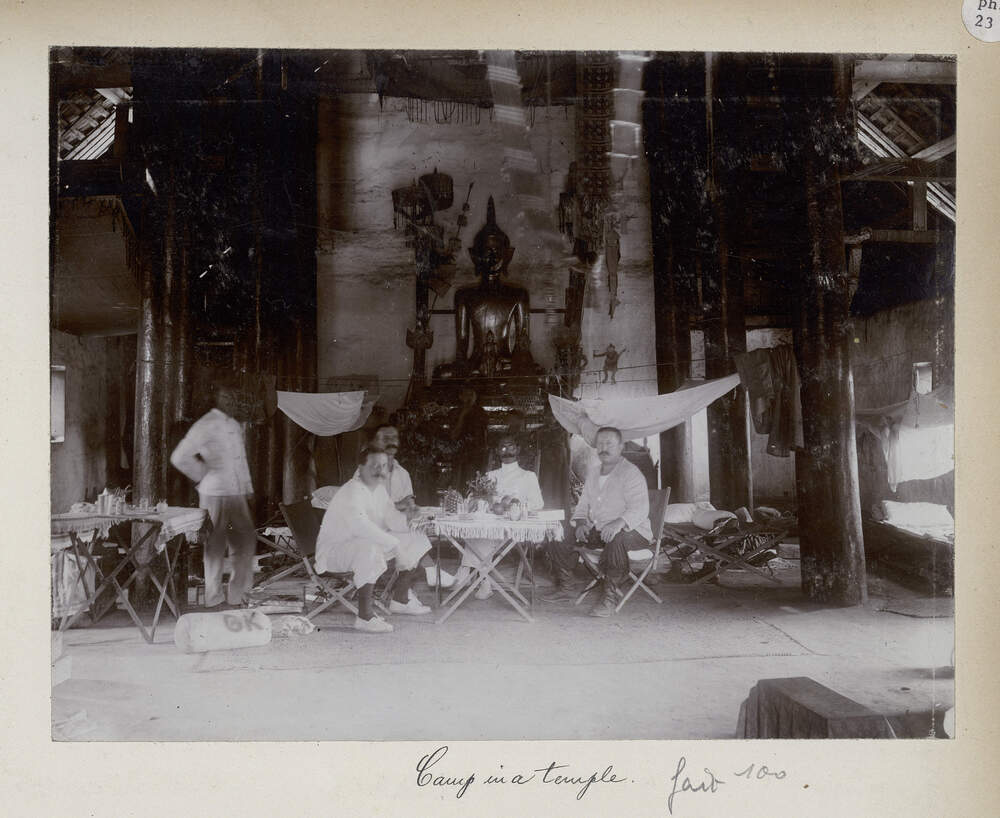[ad_1]
It is not often that ScandAsia publishes research into the historical past of Scandinavia in Asia. But we did on a few occasions. A few years ago, we published an article by Anne C. Tan about a photo album following EAC (East Asiatic Company) executives on an inspection of the Mekong river on a survey for alternative transportation routes to the market. The album ended up in a French library, which is a mystery by itself.
This article identifies the most likely Photographer and adds other details to her research.
By Anne C. Tan
My recent research centered around the Danish East Asiatic Company, a photograph album documenting their activities with teak in Siam and a familial connection with my late father in law who was employed by the company in Penang, Malaysia in the first half of the twentieth century.
For the interested reader, an account was published in ScandAsia in November, 2021, ‘Travels in Siam and Laos: a lost photo album’, in which I made the familial connection to the East Asiatic Company, and their teak forest concessions acquired from the Siamese government in Phrae province. (https://scandasia.com/travels-in-siam-and-laos-a-lost-photo-album/)
In that article I drew upon an interesting photo album held by the Universite Cote d’Azur Bibliotheques which provides a photographic record of the company’s operations in Thailand in the early twentieth century. The album chronicles a trip to Siam and Laos with personnel linked to both East Asiatic company (EAC) and L’Est Asiatic Francaise (EAF) an affiliated company founded in 1902.

The bound photo album, Siam and Laos consists of 54 numbered plates which contain 350 photographs/albumen prints. The albumen process was the main positive printing photographic process of the nineteenth century. The trip starts in Bangkok and travels via Uttaradit north to Phrae, the teak forests of northern Thailand and thence to Laos. Journeying then by boat, the travellers descend the Mekong using small wooden boats bearing the flag of EAF.
Questions answered
Many questions arise when examining this photo album not the least of which is its provenance, the photographer’s name, travel details and companions, dating the expedition and so on. Presently, I believe I have been able to discern the answers to many of these questions and pay tribute to the many respondents who have assisted me with relevant ideas and references.
The academic institution which holds this photo album and their archivist who has written an excellent summary of the journey, has shed some light on the album’s provenance.
According to the archivist, on the album’s first page is mentioned: “ACHAT CNRS” which means ‘Bought by CNRS’. CNRS (French National Centre for Scientific Research) was created in 1939 and is the largest fundamental science agency in Europe. In the 1980’s, the archivist’s institution, ASEMI (South East Asia and Insulin World) was dependent upon CNRS. Like me, their archivist hotly pursues each likely lead.
In my earlier article I commented on the outstanding quality of the photos, that the composition and framing of the images suggested that a professional was engaged to record this expedition.
Details resurfacing
This quest has seen many twists and turns. A book Lao Roots: Fragments of a Nordic-Lao Family Saga by Fleur Brofos Asmussen promised to unlock some unknowns. In this book, the author recounts the story of her Norwegian grandfather, Peter Hauff, born in 1873. Hauff landed a job in 1894 with a large commercial firm in Saigon, where he immersed himself in the culture and language, which gained the respect of locals.
In his records, Hauff states that two East Asiatic Company personnel, Guldberg and Fenger, visited him in 1903, interested in floating teak on the Mekong. He was so skilled at this, having traded up the river from Saigon…so EAC personnel went to the right person. Hauff had invaluable knowledge of the Mekong both up and downstream, and its challenges especially the rapids of Khemmarat.
The account of Peter Hauff’s shipment of teak logs down the Mekong is contained in Lao Roots.
Hauff also states that EAC personnel had with them a Sinhalese servant and a French photographer, Mr Agassiz with much photographic apparatus whom Hauff had met previously in Singapore. Might he be the elusive photographer?


The East Asiatic personnel wanted to see the Mekong’s large waterfalls. Hauff makes arrangements for the trip with 150 men and plenty of boats. Subsequent research has identified Felix Agassiz as an assistant to G.R.Lambert, the longest surviving firm of Singapore photographers. John Falconer ( A Vision of the Past: Photography in Singapore and Malaya) argues that Lambert and Co., could be seen as the nurturer of the talent of numerous other photographers, including Stafhell and Kleingrothe.
Felix Agassiz, after a period as assistant with Lambert and Co., in the 1890’s, then went on to found his own business in town as proprietor of The Photo Store, 56 Hill Street, Singapore, ca. 1898-ca.1905. Along with another researcher, Jean-Michel Strobino, I believe that Felix Agassiz is the elusive photographer.
Virtual traveling Anno 1903 – 1909
The colonial album as a story has been described by Dirk Janse (1999) as a story told in meaningful coherence. The meaningful visual narrative could bridge the thousands of kilometres between far flung places and motherland. Images showed the ‘Westerner’ in the East. He explored unknown and dangerous areas, traversed treacherous rapids, faced obstacles.
Nowhere is this narrative exemplified so accurately as with the photo album Siam and Laos. Investors were given the opportunity to take a paper inspection tour of far flung companies through the photos in the album, to travel vicariously.This album documents riverscapes, company offices/factory/residences, group portraits, village views, company personnel and local employees. Such albums were used as a kind of visual annual report.
Guldberg and the temple camp
In my earlier research I was intrigued by a photo bearing the caption “Camp in a temple” which show East Asiatic Company personnel in a Buddhist temple and sojourning overnight as referenced with camping arrangements. Further study has revealed that camping in temples was common practice for imperial European travellers in the late 19th and early 20th century. The temple compound provided safety and sanctuary.
Travelling in Northern Siam, Reginald Le May, Acting Adviser to the Siamese Government wrote of the practice during his journey from Bangkok to Chiang Mai (1913).” [Spending a night in a temple]…which is not so strange a proceeding as it may seem, for most temples in Siam, at any rate in the provinces, are open to travellers as rest-houses, and you may spread your camp bed on the cement floor with the certain knowledge that no one will disturb you or question your honesty of purpose. Only you must put your head beneath the Buddha’s care, and not turn your feet towards the altar’. (An Asian Arcady. The Land and Peoples of Northern Siam, 1926).

I have also been able to identify the figure on the right as Captain V. Guldberg, brother-in-law of H.N Andersen the founder of the East Asiatic Company. Guldberg was the managing director of EAC in Bangkok. The temple itself has also been located and is the Wat Saen Muang Ma in Chiang Mai here imaged in both the EAC album and contemporary images.
Floating of logs on Mekong
On a website: https://entreprises-coloniales.fr I found an EST-ASIATIQUE FRANÇAIS company report dated 11 February, 1911 which commented on ‘a second floating of logs down the Mekong following a 1909 campaign (which showed favorable prospects)’. 1909…small number.
Mention is also made in the report to the French company’s connections/associations with EAC and to a French manager’s name, Monsieur Lesterre.
[The report further mentions: “The general assembly appoints as directors of the Company under the terms of article 16 of the articles of association: MM. Baron Hely d’Oissel, K. A. Wallenberg, Henri Estier, H. N. Andersen, Ernest Carnot, Paul Lecat, Alphonse Mayer, Count de Moltke-Huitfeldt, Admiral du Plessis de Richelieu, André Rickmers, Jean Trystram.” The presence of the EAC is evident. Ed.]
It seems likely that the second part of the photo album records joint early floating operations down the Mekong taken with EAC personnel, perhaps with their oversight/advice/possible scoping of future trade opportunities. It also is possible to then date the activities recorded in the album as likely occurring between 1903 and 1909.
Comments
As with all research some roads flow smoothly and some which appear promising yield scant reward. This researcher feels confident of making some small inroads into answering some of the questions raised by this photograph album.
The Universite Cote d’Azur Bibliotheques in Nice is very close to the small village where Peter Hauff died and the university’s archivist wonders if someone who inherited the album sold it to their institution in the 1980’s.
[ad_2]
